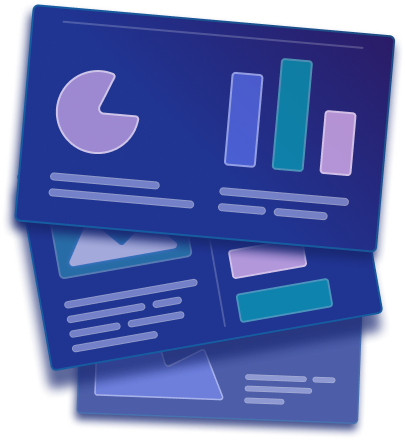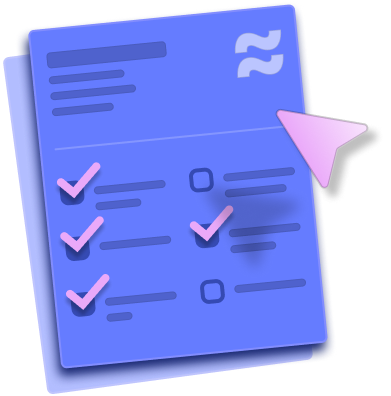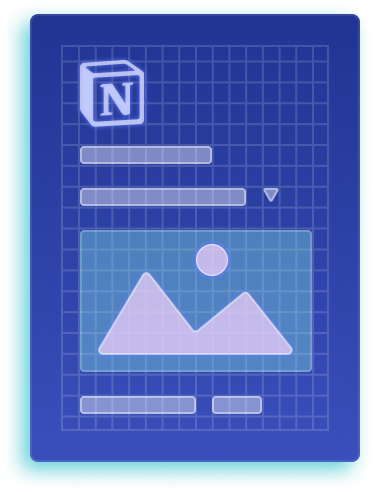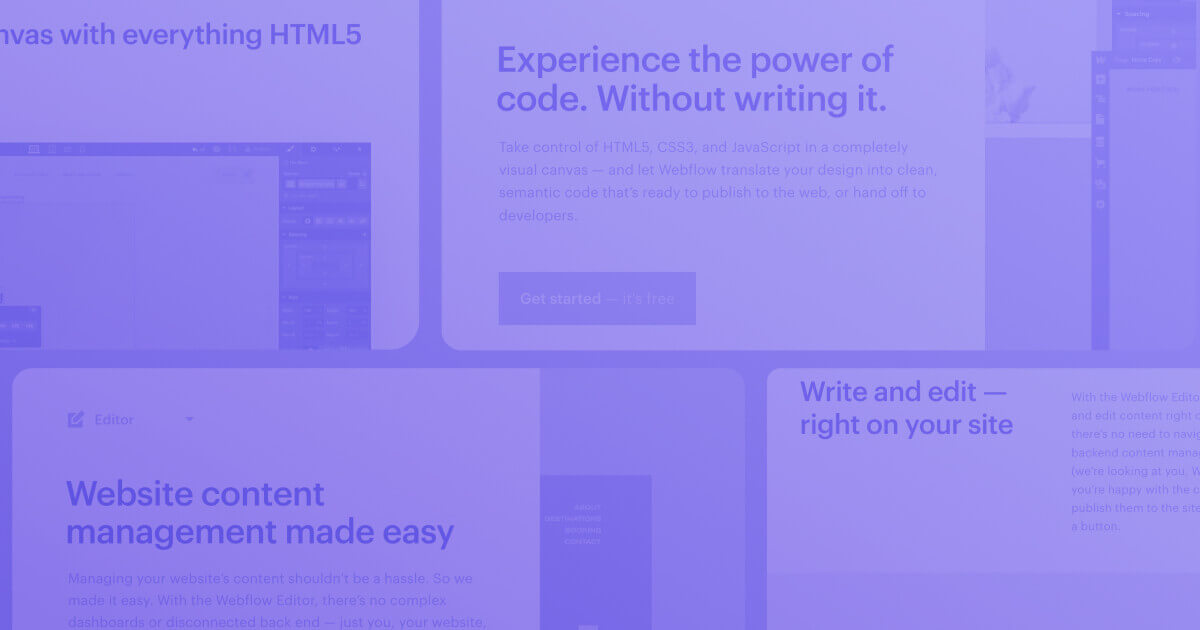
Mastering Webflow Design: Understanding the Differences Between UX and UI
Here’s a scary fact for you: 88% of users said they wouldn’t return to a site if they had a poor experience with it, according to a TopTal infographic.
But what do they mean by experience? It’s the part that a UX designer needs to focus on.
UX is short for user experience, and UI is user interface. They’re not the same thing but often work hand-in-hand.
UX requires an analytical approach, whereas UI is the creative input. But it goes way beyond this simple distinction.

In the following article, I’ll explain the differences between UX and UI and how the two are intertwined in Webflow. But first, let’s explore what each of these means.
{{cta}}
What Is UX?
UX refers to how a person interacts with a product, service, or system, particularly in the case of digital interfaces. In Flow Ninja, these digital interfaces happen to be websites.

Regarding website user experience, some things to consider are:
- Responsive design – Users from different devices and screen sizes should be able to access the site easily and seamlessly.
- Clear and intuitive navigation – Items and sections on the site should be clearly and logically organized so that the user can intuitively navigate through it and complete the desired action.
- Error handling and feedback – In case of form submissions, cart errors, or any other issues, the website should provide clear and helpful error messages that guide users on correcting the problem.
- Streamlined checkout processes – If your site has a store, the user should be able to quickly select and purchase a product without dropping out in the process.
- Secure payment options – The website should support various secure payment methods to instill user confidence in transactions.
- High-quality content on the site – Good user experience also means checking that images and the copy on the site communicate to the visitor what you want and engage them, or at least not confuse them.
- Availability – Good user experience on a site also means being available to visitors and ensuring communication channels are presented to them logically so they’re encouraged to reach out.
UX Designer: What Do They Do?
Has this ever happened to you:
You buy a new TV and take a remote into your hand but cannot find the right buttons to click? It’s all strange and gets on your nerves. All buttons feel somehow mixed up in comparison to your old remote.
Some new remotes are easier to get used to, while others take ages to accommodate. You just keep pressing the wrong buttons over and over. It means one UX designer did a better job than the other.

The job of a UX designer is to, technically speaking, make your life easier.
They make sure the use of a product is as seamless as possible for the user. They aim to provide the optimal experience for them, which is the X in the UX.
This is easier said than done.
A product user might think that UX comes naturally. But it’s the opposite. It’s hours and hours of intense research and preparation. Most importantly, it’s plenty of iterations.
As a UX designer, you won’t focus on aesthetics as much as on functionality. Here’s what’s expected of this role.
- User research – Understand target audience needs, preferences, behaviors, and pain points.
- User personas – Create fictional representations of typical users to guide design decisions.
- Information architecture – Organize content logically for easy navigation.
- Wireframing and prototyping – Visualize layout and functionality before full design.
- Accessibility – Ensure usability for people with disabilities.
- Visual design – Focus on color, typography, and imagery for a cohesive look. This is also where UI designers come into play.
- Interaction design – Define engaging user interactions and animations.
- Usability testing – Gather user feedback for iterative improvements.
- Responsive design – Create consistent experiences across devices.
- Performance optimization – Optimize loading times and interactions.
- Error handling – Provide user-friendly error messages.
- Consistency – Maintain a familiar user experience.
- User flows – Map out user journey steps.
- Microinteractions – Enhance feedback and delight users.
- Contextual inquiry – Observe users in natural settings.
- Collaboration – Work closely with the team for alignment.
- Continuous learning – Stay updated with design trends and tech.
Of course, the tasks of a UX designer might differ depending on the product they’re working on, but this is the gist of it.
Best UX Tools: Where Does Webflow Fit In?
Here are some tools I’d suggest for UX.
- Balsamiq: Quickly create low-fidelity wireframes with ease.
- Figma: Design and prototype with high-fidelity in the cloud.
- UserTesting: Gather real user feedback for design improvement.
- Overflow: Diagram user flows effortlessly for apps or websites.
- Hotjar: Understand user website interactions through heatmaps and recordings.
As for Webflow, it is an excellent tool for actually putting the design together easily and publishing your site quickly. However, I recommend using another tool or even combining several tools before implementing it into Webflow.
My colleague, Milan, wrote an article on the best wireframing tools, as it’s an essential part of both UX and UI design.
What Is UI Design?
UI design is about making digital products, like websites and apps, look good and easy to use. It's about creating visually attractive and user-friendly interfaces so that people can interact with them quickly and have a great experience.
Imagine the front door and interior decor of a house. It's the first thing you see and interact with when you enter the house. A well-designed UI is like a welcoming front door with clear signs and a beautifully decorated interior that makes you feel comfortable and excited to explore the rest of the house.
The main goal is to make sure users enjoy using the product and finds it aesthetically pleasing.

{{cta}}
UI Designer
Let’s quickly get back to the remote analogy.
Ignore how it works and what its buttons can do and focus on how it looks. It somehow fits your hand perfectly. It’s thin, modern, and shiny. It’s light and matches the style of your TV or even your entire room. You feel attracted to holding it in your hand.
This means a product designer did a good job. I cannot use the term UI here because it only refers to digital interfaces, but the bottom line is that the aesthetics of a product play an important role, whether the product is digital or tangible.
Here’s a list of tasks that a UI designer should focus on:
- Visual design – Create an attractive and cohesive design with colors, typography, icons, and imagery.
- Layout and composition – Arrange elements for visual balance and guide user attention.
- Interactive elements – Design user-friendly buttons, sliders, and input fields.
- Navigation design – Create intuitive navigation for easy movement between sections/pages.
- Feedback and response – Provide visual feedback for user interactions (e.g., loading spinners).
- Consistency – Ensure a consistent design for a familiar user experience.
- Responsiveness – Optimize the interface for various screen sizes and resolutions.
- Collaboration – Work closely with UX designers, developers, and stakeholders.
- Prototyping – Build interactive prototypes for feedback and testing.
- Design system – Contribute to consistent styles and guidelines.
- Testing and iteration – Improve designs based on user feedback and data.
Best UI Tools: Where Does Webflow Stand?
If I were to pick the best tools for UI design, I’d go with Figma every time. But that’s just my preference. My colleague, Sara, created and presented a list of the top 30 design tools, many of which we use in Flow Ninja (but Figma remains #1).
Webflow occupies the fantastic #2 place, and we use it hand-in-hand with Figma.

Figma and Webflow actually work so well together that Webflow launched a plugin to streamline the migration process.
We created a separate piece with instructions for setting up the Figma to Webflow plugin.
Flow Ninja’s founder, Uroš, even made a video on this. Check it out below.
Combining UX and UI
UX is like the whole restaurant experience from the moment you enter until you leave. It includes the ambiance, service, menu, waiting time, food taste, and overall satisfaction.
UI is like the menu and how the food is presented visually. It's about attractive menus, easy-to-read fonts, and appealing images. While a nice menu may attract you, the overall dining experience and food quality matter the most.
UX is the engine; UI is the aesthetics. But the two cannot be separated.
When combining UX and UI in Webflow involves several people. At least two: a UX designer, a UI designer, and a developer.
I said two on purpose. Often, a UI designer understands the best UX practices and can approach designing a site with that in mind. This is mainly true for mediors and seniors.
In big corporations, having separate roles is often required so that everyone can focus on their part of the job. A single designer working on both UX and UI would result in a burnout.
Sometimes, corporations even have separate UX roles. For example, a UX writer only focuses on the written parts of the interface and how it works to improve the user experience.
.png)
How to Make the Most of Webflow Design
So, you’ve decided to build your site on Webflow. How should you approach UX and UI here?
If you’re a designer or a developer working on a small project in Webflow, you should start by learning the principles of UX and implementing them in your design throughout Webflow. In that case, you might not even need external tools. Webflow Designer can help you take care of most things.
However, if you want to make the most out of your Webflow design, we suggest first using other tools, such as specialized wireframing and designing tools. This is especially important if an entire team is working on your project.
At least that’s how we approach Webflow UX and UI design at Flow Ninja. Webflow is the final step that gives life to our UX/UI-powered designs and ensures that the sites are fast and fully functional.
Designing with Webflow
UX and UI design work together to attract and engage website visitors.
A great user experience (UX) with an easy-to-navigate interface (UI) makes users happy, encourages them to explore the website, and keeps them coming back for more.
A seamless and enjoyable browsing experience leads to increased user retention, improved website performance, and ultimately builds customer loyalty.
Webflow Designer is the tool you want to use when implementing your design and building a site. However, I recommend using it with other tools, such as Figma.
Using the right tools is the first step. Getting your UX right and creating a robust UI is the most difficult part. Having worked with enterprise clients, our design team at Flow Ninja has had an opportunity to perfect both UX and UI, so if you need professional Webflow designers on your project, feel free to reach out.
{{cta}}





Free Webflow Launch Checklist
After working on 200+ Webflow projects, we've compiled a checklist to use before launching your site.
.png)

.png)

in mind?
Talk with our team and learn how your ideas can become digital experiences.

.svg)







.webp)
.png)


.png)
.png)




-min.png)

-min.png)









.svg)

.png)
.png)
.webp)
.svg)


